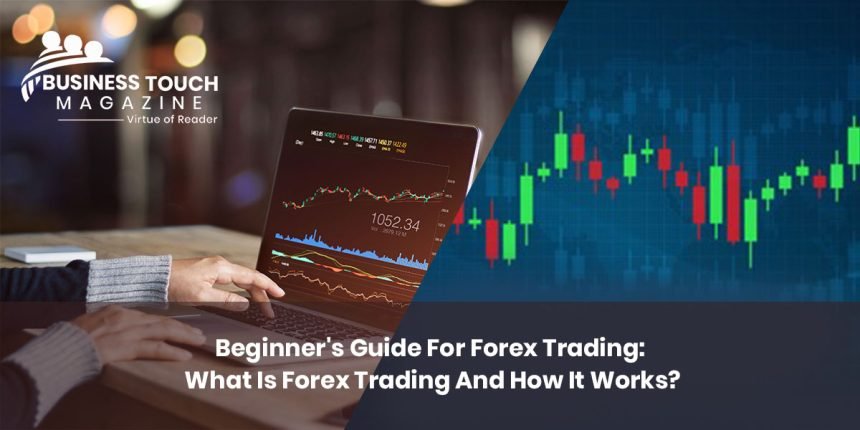What is Forex Trading?
Forex trading is the process of speculating on currency price movements, with the aim of making a profit. Many currency conversions on the forex market are for practical use, and not for creating profit. However, traders can speculate on forex market price movements, to take advantage of correctly prediction movements.
Every day, large numbers of new traders start trading for the first time on forex trading. They were attracted to Forex because they believe trading currencies are an easy way to make fast profits, diving right in with first educating about how it works.
Trading Forex Step-by-Step Direction
- Open a spread betting or CFD trading account (contract for difference account allows traders to speculate on the future market movements of an underlying asset, without actually owning or taking physical delivery of the underlying asset). You can open a live or demo account to trade on price movements of forex pairs.
- Start researching to find the FX pair you want to trade. Use the news and analysis section to keep up-to-date with market news that may impact FX, and the market calendar to keep updated with market-moving events.
- Based on your research, decide if you want to buy or sell. Is the research you’ve conducted indicating the base currency (the first-named currency in the pair) is likely to weaken or strengthen? Go long and ‘buy’ if you believe it will strengthen, or go short and ‘sell’ if you think it will weaken.
- Follow your strategy. Before placing a trade, ensure you have followed your strategy which should include risk management.
- Place your forex trade. As per your strategy, place your forex trade with defined entry and exit points. Don’t forget to use risk management conditions, such as a take-profit or stop-loss order.
- Close your trade and reflect. By following your trading plan, exit the market at your forecasted limits. Evaluate how you performed, so that you can improve.
The foreign exchange markets
Forex, foreign exchange, FX, is the marketplace where companies, banks, individuals, and governments exchange currencies. It’s the most actively traded market in the world, with over $5 trillion traded on average per day. When trading currencies on the foreign exchange market, currency pairs are often split into a major, minor, and exotic (or emerging) currency pairs. The US dollar is considered the most popular currency in the world.
A fascinating aspect of world forex markets is that there are no physical buildings that function as trading venues for the markets. As an alternative, it is a series of connections made through trading terminals and computer networks. Participants in this market are institutions, investment banks, commercial banks, and retail investors.
Spot Market
The spot market is where currencies are bought and sold based on their trading price. That price is determined by supply and demand and is calculated based on several factors, including current interest rates, economic performance, sentiment toward ongoing political situations, and the perception of the future performance of one currency against another. A finalized deal is known as a spot deal. It is a bilateral transaction in which one party delivers an agreed-upon currency amount to the counterparty and receives a specified amount of another currency at the agreed-upon exchange rate value. After a position is closed, the settlement is in cash.
Forwards and Futures Markets
A forward contract is a private agreement between two parties to buy a currency at a future date and at a predetermined price in the OTC markets (An over-the-counter market is a decentralized market where the participants trade with one another directly, without the oversight of an exchange). A futures contract is a standardized agreement. Futures trade on exchanges and not OTC. Unlike the spot market, the forwards and futures markets do not trade actual currencies. Instead, they deal in contracts that represent claims to a certain currency type, a specific price per unit, and a future date for settlement.
Basic Forex Trading Strategies
The most basic forms of forex trades are a long trade and a short trade. In a long trade, the trader is betting that the currency price will increase in the future and they can profit from it. A short trade consists of a bet that the currency pair’s price will decrease in the future. Traders can also use trading strategies based on technical analysis, such as breakout and moving average, to fine-tune their approach to trading.
Other trading strategies are:
- Forex scalping is where traders hold multiple short-term trades and build profit based on small but frequent winning trades. This strategy may be best suited to traders who can commit a large proportion of their time to trade and are more focused on technical analysis.
- Forex day trading is for traders who enter and exit at least one trade per day by predicting daily market movements, and are looking to avoid overnight holding costs.
- Swing trading forex may be best suited to traders who prefer a balance between fundamental and technical analysis. Positions are open for several days, to buy at ‘swing lows’ and sell at ‘swing highs’, or vice versa if going short. Less time is spent analyzing market trends, and there will be overnight holding costs and more chance of the market ‘gapping’.
- Position trading involves holding positions over long-term periods and ignoring short-term price fluctuations.
Summarising
Once you’ve understood the basics of forex, try putting your newfound knowledge into practice with a demo account. You can test forex strategies and tips, and start to create a trading plan to follow. Once you’re comfortable with a strategy using the demo account, including managing your risk, and are familiar with the trading platform, you can open a live account to trade on forex for real.




